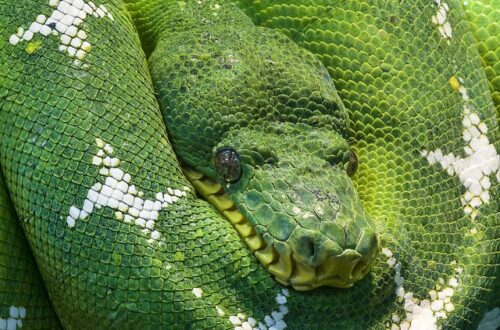
Traditionalist Views of Women: A Little History Lesson
Theological issues relating to women—the texts, the interpretations, the history, the challenges—lie in an area of teaching and thus of academic interest for me. Because seminary degrees cannot shoehorn every single topic into a set number of credit hours, often people looking at deep-dives into history or the history of ideas must go outside of seminary walls to learn chronologies, read the primary documents, and learn social contexts.
Such was the case when I took a doctoral course on women’s history. Acknowledging that I taught at a seminary, my professor let me consult with a historian at my own school to create a supplementary reading list. She ran it by some seminary profs she knew to make sure we added any seminal texts I might have missed, and I set to work reading and processing.
In knocking out that list, I made many happy discoveries. But one very unhappy jolt came from reading writings by men like Augustine, Bonaventure, and Martin Luther, who spoke disparagingly of women. I quickly learned that “the traditional view of women in the church” contained some shocking revelations. I wish I had known about them before I hit the doctoral level of study. So here you go: a sampling from some of the most influential thinkers in church history:
Didymus the Blind – “The man is more able than the woman to fight and defend himself against the trickery of the adversary.”[1] Didymus the Blind (c. 313–398) was a North African Christian theologian in the Church of Alexandria, Egypt, where he taught for about a half-century.
John Chrysostom – “The woman taught once, and ruined all. On this account therefore he says, ‘let her not teach.’ But what is it to other women, that she suffered this? It certainly concerns them; for the sex is weak and fickle, and he is speaking of the sex collectively.” John Chrysostom (347–407), an important early-church Father who served as archbishop of Constantinople, was known for his preaching. He is referring to Eve in the Garden, and he connects the event to 1 Timothy 2. The “he” to whom he refers is the apostle Paul. Chrysostom interprets Paul as teaching that women—not only Eve, but the sex collectively—are weak and fickle.
Augustine – [Satan made] “his assault upon the weaker part of that human alliance, that he might gradually gain the whole, and not supposing the man would readily give ear to him or be deceived….” [2] Augustine of Hippo (354–430) was a theologian and philosopher of Berber origin. This bishop of Hippo Regius in Numidia, Roman North Africa, lived in the fourth century. As of 2022, the Roman Catholic Church had named only 37 Doctors of the Church, and Augustine was one of them. “Doctor of the Church” is a title given to a holy person recognized as having made a significant contribution to theology or doctrine through research, study, or writing. Augustine is enormously influential, and I commend to readers his important works, which include The City of God, On Christian Doctrine, and Confessions. But our brother Augustine came to Christ as a sexually broken man. And in the statement above he is saying that the snake’s attack on Eve in the Garden was rooted in the serpent’s knowledge that the man would be less inclined to listen to his voice of evil and less easily deceived than would the woman—which is why the snake targeted her: because she was the weaker of the two humans. Augustine’s writings have influenced the development of Western philosophy and Western Christianity. Additionally, he is viewed as one of the most important Church Fathers of the Latin Church in the Patristic Period.
Bonaventure – “No one is capable of taking up Orders who does not bear the image of God, because in this Sacrament man in a certain way becomes God, or divine, while he is made a participant in divine power. But man by reason of his sex is ‘imago Dei,’ the image of God, just as it is said in the eleventh [chapter] of the first [letter] to the Corinthians. Therefore in no way can a woman be ordained.” [3] Bonaventure (1217–1274), an Italian Franciscan, was a thirteenth-century bishop, cardinal, scholastic theologian and philosopher who served for a time as Bishop of Albano. Bonaventure was declared a doctor of the church in 1587, more than three hundred years after his death. His influence has endured for centuries. Bonaventure wrote several works on the spiritual life and recodified the constitution of his order (1260). His argument for why women cannot serve at the altar is that they do not bear the image of God. He believes Paul (in 1 Cor. 11) teaches a man, by virtue of his sex, is the image of God, which woman apparently is not. In Bonaventure’s view, a woman cannot be ordained because she does not image God.
Thomas Aquinas (1225–1274) – “As regards the individual nature, woman is defective and misbegotten, for the active force in the male seed tends to the production of a perfect likeness in the masculine sex; while the production of woman comes from defect in the active force or from some material indisposition, or even from some external influence; such as that of a south wind, which is moist, as the Philosopher observes (De Gener. Animal. iv, 2). On the other hand, as regards human nature in general, woman is not misbegotten, but is included in nature’s intention as directed to the work of generation….” [4] A contemporary of Bonaventure, Thomas Aquinas, was an Italian Dominican friar and priest, who would have easily qualified for membership in Mensa. He was and is an immensely influential philosopher, theologian, and jurist in the tradition of scholasticism. One might call him a theological and educational doctor’s doctor. But his views on male and female were deeply influenced by those of Aristotle. Aquinas saw woman as defective, rooted in Aristotle’s theories of male and female that relate to men being dry (good) and women, moist (bad). Aquinas’s reference to “the Philosopher” is a nod to Aristotle.
Erasmus (1466–1536) – “Eve was deceived first when, believing the serpent and beguiled by the enticement of the fruit, she disregarded God’s command. The man could not have been taken in either way by the serpent’s promises or by the allure of this fruit.”[5] Desiderius Erasmus Roterodamus was a Dutch philosopher and Catholic theologian. Considered one of the greatest scholars of the northern Renaissance, he gave lectures at Cambridge. In describing the Fall in Eden, he asserts that while woman was deceived by the serpent, man was impervious to such beguilement. Rather than seeing both male and female as vulnerable to such temptation, he sees the female as possessing weakness the man does not have.
Martin Luther (1483–1546) – By divine and human right, Adam is the master of the woman…There was a greater wisdom in Adam than in the woman.[6] Martin Luther was a German priest, theologian, and author. A former Augustinian friar, he was the seminal figure in the Protestant Reformation, penning the famous “95 Theses.” The Protestant denomination Lutheranism is named for him. Rather than seeing male mastery of the woman as a consequence of the fall, Luther is saying Adam is the master of her by divine and human right.
John Knox (1514–1572) “The weak, the sick, and impotent persons shall nourish and keep the whole and strong, and finally, that the foolish, mad and frantic shall govern the discrete, and give counsel to such as be sober of mind? And such be all women, compared to a man in bearing of authority. …Nature, I say, does paint them further to be weak, frail, impatient, feeble and foolish: and experience has declared them to be inconstant, variable, cruel and lacking the spirit of counsel and regiment.”[7] Founder of the Presbyterian Church of Scotland, sixteenth-century minister John Knox was a Reformed theologian and writer who was a leader of his country’s Reformation. Describing women as “weak, frail, impatient, feeble and foolish” as well as “inconstant, variable, cruel and lacking the spirit of counsel and regiment”— does that sound like Jesus’s description of his coworkers in Romans 16 or his interaction with Mary, who chose what was better?
Some tremendously influential theologians whom the church has revered for centuries held unbiblical views of woman. And this is precisely why Protestants do not have popes; we believe no one is infallible. We can love what Aquinas says about friendship while rejecting his interpretations on women. The above information is also part of why in the late 1980s, some conservative evangelicals began to replace the label “traditionalist” with “complementarian.” Teaching that vulnerability to deception was a “human” thing, not “woman” thing (2 Cor 11:3) and teaching that woman is made in God’s image were breaks from some of the tradition on the subject of women.
Photo by Sarah Moon on Unsplash. You can identify Thomas Aquinas by his black and white garb, indicative of a Dominican, a member of the preaching order.
[1] Translated by William Webb. Slaves, Women and Homosexuals. (2001) Downers Grove: IVP, p. 263.
[2] Translated by Philip Schaff. Augustine. The City of God and Christian Doctrine, Nicene and Post Nicene Fathers Series 1, Volume 2, Christian Classics Ethereal Library, https://www.ccel.org/ccel/schaff/npnf102.iv.XIV.11.html, accessed September 5, 2022.
[3] Bonaventure. From Commentarium in IV Libros Sententiarum Magistri Petri Lombardi by Bonaventure, 1251–1253 AD; published in Opera Omnia, Quaracchi 1882-1902. Question 1, Answer C. https://womenpriests.org/theology/bonav1-bonaventure/ accessed September 5, 2022.
[4] Thomas Aquinas. Translated by Fathers of the English Dominican Province. Summa Theologiae, 2nd ed. (1920) First Part, Question 92, reply to Objection 1. https://www.newadvent.org/summa/1092.htm, accessed September 5, 2022.
[5] Erasmus. “Paraphrases on the Epistles to Timothy, Titus, and Philemon,” trans John J. Bateman, in Collected Works of Erasmus, ed. R. D. Sider (Toronto: University of Toronto Press, 1993), 44:17.
[6] Martin Luther, “Lectures on 1 Timothy,” in Luther’s Works, ed. Hilton C. Oswald (St Louis: Concordia), 1973, 28:278–9.
[7] Knox, John. Section Two: “The First Blast to Awake Women Degenerate,” The First Blast of the Trumpet Against the Monstrous Regiment of Women. First Published 1558. Published by the Ex-classics Project, 2020. https://www.gutenberg.org/files/9660/9660-h/9660-h.htm, accessed September 5, 2022.




